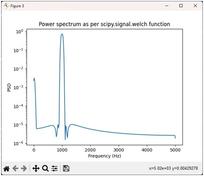Analog vs Digital Signal Processing: Key Differences
Advertisement
This article compares analog signal processing (ASP) with digital signal processing (DSP), highlighting the key differences between the two.
Analog Signal Processing
 Analog Signal Processing
Analog Signal Processing
Analog signal processing deals with signals that haven’t been digitized. This means the signals are continuous in both time and amplitude. Classic examples of systems that rely on ASP include radios, televisions, telephones, and radar systems.
Here are some examples of non-linear circuits that utilize ASP:
- Compandors: Used for dynamic range compression and expansion.
- Multipliers: Often implemented using mixers or voltage-controlled amplifiers.
- Voltage Controlled Oscillators (VCOs): Oscillators whose frequency is controlled by an input voltage.
- Voltage Controlled Filters (VCFs): Filters whose cutoff frequency is controlled by an input voltage.
- Phase-Locked Loops (PLLs): Used for frequency synthesis and tracking.
In ASP, the processing is applied directly to the analog signal, meaning there’s no need for Analog-to-Digital Converters (ADCs) or Digital-to-Analog Converters (DACs), unlike in digital signal processing.
Digital Signal Processing
 Digital Signal Processing
Digital Signal Processing
DSP, on the other hand, processes discrete-time, discrete-amplitude signals. These signals are sampled at specific points in time and represented by digital values.
Texas Instruments’ TMS320 is a popular DSP chip. Other notable DSP manufacturers include Freescale, Intel, CEVA, and XILINX.
As shown in the conceptual diagram, an A/D converter is used to transform the analog signal into a digital signal before it’s fed into the DSP module. After the digital signal processing is complete, a D/A converter transforms the digital signal back into an analog form, tailored to the specific requirements and applications.
Typical applications of DSP include:
- Up/Down Sampling: Changing the sampling rate of a signal.
- Filtering: Removing unwanted frequencies from a signal.
- Image Processing: Enhancing or manipulating images.
- Audio Processing: Modifying or analyzing audio signals.
- Fourier Transform: Decomposing a signal into its constituent frequencies.
- Compression: Reducing the size of a signal for storage or transmission.
- Acquisition: Capturing signals from sensors or other sources.
- Correlation/Convolution: Analyzing the relationship between signals.
- ECG Analysis (Medical): Processing electrocardiogram signals.
- Radar Signal Processing: Analyzing radar signals to detect objects.
Advertisement
 RF
RF


